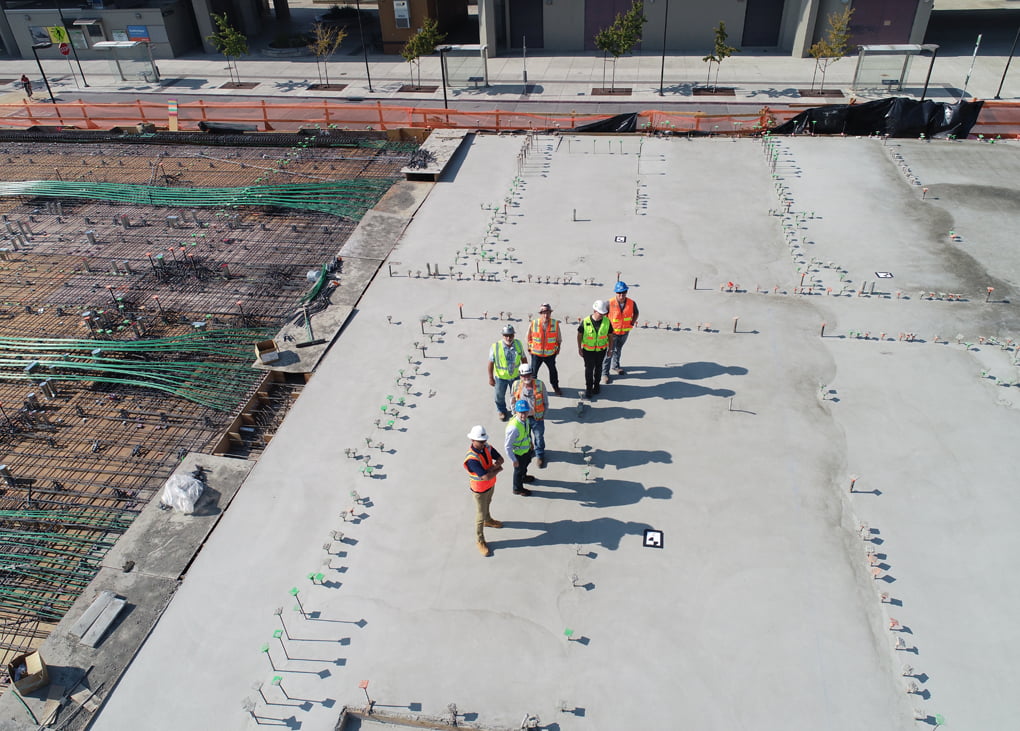A new report warns that embodied carbon could become a primary source of built environment emissions unless Australia acts now.
Embodied Carbon & Embodied Energy in Australia’s Buildings was developed by the GBCA and thinkstep-anz with support from the Australian Government’s Department of Industry, Science, Energy and Resources. It says that without action, embodied carbon will be responsible for 85 per cent of Australia’s built environment emissions by 2050.
Conversely, if Australia reduced the embodied emissions in new commercial and residential buildings by just 10 per cent between now and 2050, this would eliminate at least 63.5 megatonnes of emissions – the equivalent to taking 13.8 million cars from the roads for a year.
A growing factor
The report finds embodied carbon – the emissions generated during the manufacture, construction, maintenance and demolition of buildings – made up 16 per cent of Australia’s built environment emissions in 2019. Without intervention this share will balloon to 85 per cent at a time when Australia must achieve net zero emissions in line with the Paris Agreement.
The figures are for the base building only (structure, foundation, and façade), and exclude interior fitout, building services and all infrastructure. The share that buildings contribute to Australia’s total greenhouse gas emissions approximately doubles if fit-out and buildings services are included; however, they were outside the scope of the work because they are harder to forecast accurately. The report says that as understanding of embodied carbon grows over time, the scope of analysis may be expanded to include these items.
“The challenge of decarbonising our built environment has never been more urgent,” says the GBCA’s Chief Executive Officer Davina Rooney.
“Last week, the IPCC sounded the global alarm, with a report which finds temperatures are likely to rise by more than 1.5°C above pre-industrial levels within just two decades, bringing with it widespread devastation and extreme weather,” says Rooney.
“We are on a journey to decarbonise our buildings, but up until now we haven’t quantified the hidden emissions in Australia’s built environment – our embodied carbon.
“While we are making great strides forward in our work to tackle operational carbon in buildings, embodied carbon is largely locked in before a building is occupied. The decisions we make today will have implications and impacts for decades to come.”
Dr Barbara Nebel, Chief Executive Officer of thinkstep-anz, says the report shines a light on a critical issue.
“As Australia’s electricity grid decarbonises, and as more buildings are powered by renewable energy, embodied carbon from the built environment will make up a greater proportion of Australia’s total carbon footprint – increasing by 50 per cent from 2019 to 2050,” says Dr Nebel.
“The project provides a robust baseline for embodied emissions at a national level – emissions that have been largely overlooked to date. This allows the building and construction industry to track progress over time in reducing its emissions.”
Systemic solutions required
The report notes that reducing embodied carbon requires systemic change along the length of the supply chain. The study involved contributions from all major construction material categories, as well as from large construction companies, as specifiers of these materials.
A significant share of embodied emissions in buildings come from common building products, such as concrete and steel, which are manufactured through process heat and chemical reactions. This means their embodied emissions will not decrease by decarbonising the electricity grid alone.
“On the supply side, we need manufacturers to innovate – to experiment with design, process substitution, carbon capture and storage, and green hydrogen, for example,” says Rooney. “On the demand side, we need constructors to ask for low-carbon products, to reuse existing materials and to refurbish, where they can, rather than rebuild.”
Rooney notes that the GBCA’s Green Star rating system rewards projects that use materials with low embodied carbon, but says industry and governments must also step up their game.
“The report makes this clear: there is a clear need for governments to support suppliers as they decarbonise and for investment in research and development of new materials and practices,” says Rooney.
“Tackling embodied carbon is an enormous challenge, but by doing so we will not only drive down emissions in our building stock. We will also help to future-proof Australia’s energy-intensive industries and ensure we can maintain our global competitiveness in a low-carbon world.”
To read the report, click here.
 Mark Vender
Mark Vender


Leave a Reply